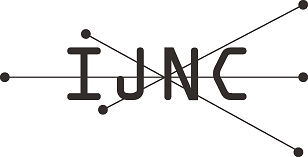Face-Image Anonymization as an Application of Multidimensional Data k-anonymizer
Abstract
Recently, the developments of data communication networks and advancements in the processing capacity of computers have significantly increased the amount of data that can be applied to a service. These data might result in future innovations. However, the privacy violation of data has become a problem. For example, images of customers’ faces captured with a surveillance camera may lead to new marketing strategies, as the reactions of the customers can be measured from their facial expressions. However, we must consider the privacy of customers when entrusting the images to a third-party data analyst. For solving this privacy problem, researchers have been developing anonymization technologies that are used to preserve privacy by deleting the private information from the original data. However, conventional anonymization techniques cannot appropriately anonymize high-dimensional data such as facial images. This is attributed to the fact that conventional anonymization techniques do not consider the complex relationships between dimensions and the semantic loss of data. However, studies regarding machine learning have been actively conducted; particularly, neural networks (NN) have developed remarkably since the advent of AlexNet [8]. Both machine learning and anonymization share the common idea in their bases to abstract statistical information from a given dataset . Therefore, the machine learning technology might enhance the functionality of anonymization techniques. In this study, we propose a method to apply the results of machine learning to anonymization based on the aforementioned common idea , and the method is named multi-input k-anonymizer unit (MIKU). Notably, MIKU has two modules called S and G maps for mapping a given data, and NNs are used for these modules to generate more natural anonymized data for humans than directly anonymized data, which is generated only by processing the pixel values of facial images. To evaluate MIKU, a direct anonymization method is used, without any NN, for the facial images. The facial images of CelebA [9] are used for both qualitative and quantitative evaluations. The qualitative evaluation is conducted by analyzing the anonymized facial images obtained using different methods, and the quantitative evaluation is performed using the Fréchet inception distance(FID) [4]. In the qualitative evaluation, there are cases where the quality of the anonymized images generated using the comparison method is low because unnatural edges and blurs are created on the anonymized facial images. However, MIKU maintains the quality and attributes of the original facial images even in those cases. In the quantitative evaluation, a different result is obtained when k = 2 anonymity. However, on anonymity greater than 2, the facial images anonymized using MIKU have higher quality than those anonymized using the comparison method.
Keywords
k-anonymization; Facial Image; High-Dimension; StyleGAN; Neural Network
Full Text:
PDFRefbacks
- There are currently no refbacks.
